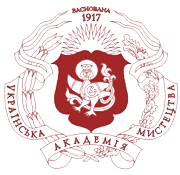STRATEGY FOR THE ADAPTATION OF ARCHITECTURAL EDUCATION IN UKRAINE DURING MARTIAL LAW: TOOLS AND APPROACHES
DOI:
https://doi.org/10.32782/naoma-bulletin-2025-3-7Keywords:
architectural education, adaptation of the educational process, architectural design strategy, innovative approaches, creativity in architecture, interdisciplinary approach, design constraints, humanitarian challenges in architecture, mimetic approaches in architecture.Abstract
Abstract. The aim of the article is to justify the necessity of a strategic approach to adapting architectural education in Ukraine under martial law, to identify the key tools and teaching methods that will ensure the continuity of the educational process, integration of innovative technologies, and the formation of competencies required for the post-war reconstruction of the country. Research methods. The paper uses the case study method based on a real educational assignment for architecture students specializing in 191 «Architecture and Urban Planning». The assignment involves adapting to the constraints in design, analyzing contemporary examples of mimetic transformations in global architecture, and modeling group interaction. It also includes a comparison of traditional and strategic approaches in architectural design education. Research results. The study found that a strategic approach to design helps students develop a deeper understanding of the context of tasks, enhances critical thinking, fosters teamwork, and promotes the ability to generate innovative solutions. Tasks with limited resources stimulate the search for original approaches, while group dynamics ensure high quality and diversity of ideas. The use of mimetic approaches in education allows students to design architectural forms that organically combine functionality, aesthetic principles, and harmony with the surrounding environment. Conclusions. Architectural design strategy is an effective learning tool that fosters the development of students' creative potential, shapes professional competencies, and creates favorable conditions for integrating knowledge from various fields. Its application helps students adapt to the contemporary challenges of architectural practice, enhances skills in working with constraints, and stimulates the implementation of innovative approaches. Such strategies are an integral part of preparing the new generation of architects, capable of effectively solving interdisciplinary, socio-humanitarian, and creative tasks.
References
Алєксєєва С. Сучасні підходи до професійної підготовки майбутніх дизайнерів в умовах розвитку креативних індустрій. New impetus for the advancement of pedagogical and psychological sciences in Ukraine and EU countries: research matters : Collective monograph. Riga : Baltija Publishing, 2021. Р.1–16. URL: https://doi.org/10.30525/978-9934-26-032-2-1 (дата звернення: 03.01.2025).
Креативна Країна: Культурно-освітній проєкт : [сайт]. URL: https://creativecountry.org/terms/?utm_source=chatgpt.com (дата звернення: 03.01.2025).
Окорський В. П., Валюх А. М. Креативний менеджмент : підручник. Рівне, 2017. 344 с. URL: https://
ep3.nuwm.edu.ua/13109/1/ПІДРУЧНИК з КМ.2017_вип.pdf?utm_source=chatgpt.com (дата звернення: 04.01.2025).
Elif Ayse Sen. Embracing Innovation: New Approaches in Architectural Education. Illustrarch. 8 March, 2024. URL: https://illustrarch.com/articles/22715-embracing-innovation-new-approaches-in-architectural-education. html?srsltid=AfmBOooVxR4-HQ0BegKDyeMykRXyC1dnZ5J4gUg1_83d3dvzOarKoWDL&utm_source=chatgpt.com (дата звернення: 05.01.2025).
Cross Disciplinary Design-Build: The Design of Collaborative Education / Mcglohn Е., Herrmann H., Leathem T., Gregory A., Carson L. Working Out: thinking while building. 2014. P. 483–492. URL: https://www.academia.edu/12737893/Cross_Disciplinary_Design_Build_The_Design_of_Collaborative_Education (дата звернення: 05.01.2025).
Empowering Architectural Education: Innovations in 2024. Archgyan. URL: https://archgyan.com/empoweringarchitectural-education-innovations-2024/?utm_source=chatgpt.com (дата звернення: 09.01.2025).
Rodriguez C., Hudson R., Niblock C. Collaborative learning in architectural education: Benefits of combining conventional studio, virtual design studio and live projects. British Journal of Educational Technology. 2018. № 49(3). S. 337–353. URL: https://doi.org/10.1111/bjet.12535 (дата звернення: 09.01.2025).
Онкович Г. В., Дівінська Н. О., Кобченко В. І. Об’єктивні та суб’єктивні передумови оптимізації дисциплін соціально-гуманітарного циклу у ВНЗ. Оптимізація циклу соціально-гуманітарних дисциплін у вищій освіті України в контексті євроінтеграції : монографія. Київ, 2014. С. 7–20. URL: https://ihed.org.ua/wp-content/uploads/2018/09/viddil-3_mon_Optimizac-ciklu-gumanitar-discipl_Onkovich_2014_326.pdf (дата звернення: 04.01.2025).
Олексюк О. М. Компетентнісний підхід у вищій мистецькій освіті. Оптимізація циклу соціально- гуманітарних дисциплін у вищій освіті України в контексті євроінтеграції : монографія. Київ, 2014.
С. 123–125. URL: https://ihed.org.ua/wp-content/uploads/2018/09/viddil-3_mon_Optimizac-ciklu-gumanitar-discipl_Onkovich_2014_326.pdf (дата звернення: 06.01.2025).
Олійник Г. І., Гершензон М. Ш. Інноваційні підходи в підготовці професійних архітекторів. Досвід факультету архітектури НАОМА. International scientific-practical conference “Eurointegration in art, science and education: experience, development perspectives”= Міжнародна науково-практична конференція “Євроінтеграція в мистецтві, науці та освіті: досвід, перспективи розвитку”. Клайпедський Університет, 2024. С. 107–110. URL: https://web.ku.lt/uploads/documents/files/Konferencijos_tezės_2024_03_08.pdf (дата звернення: 10.01.2025).
Олійник Г. І. Інноваційні підходи проведення архітектурних практик. Досвід факультету архітектури НАОМА. Вісник Національної академії образотворчого мистецтва і архітектури. Київ, 2024. Вип. 1. С. 23–28. URL: https://journals.naoma.kyiv.ua/index.php/bulletin/issue/view/20/20 (дата звернення: 15.01.2025).








